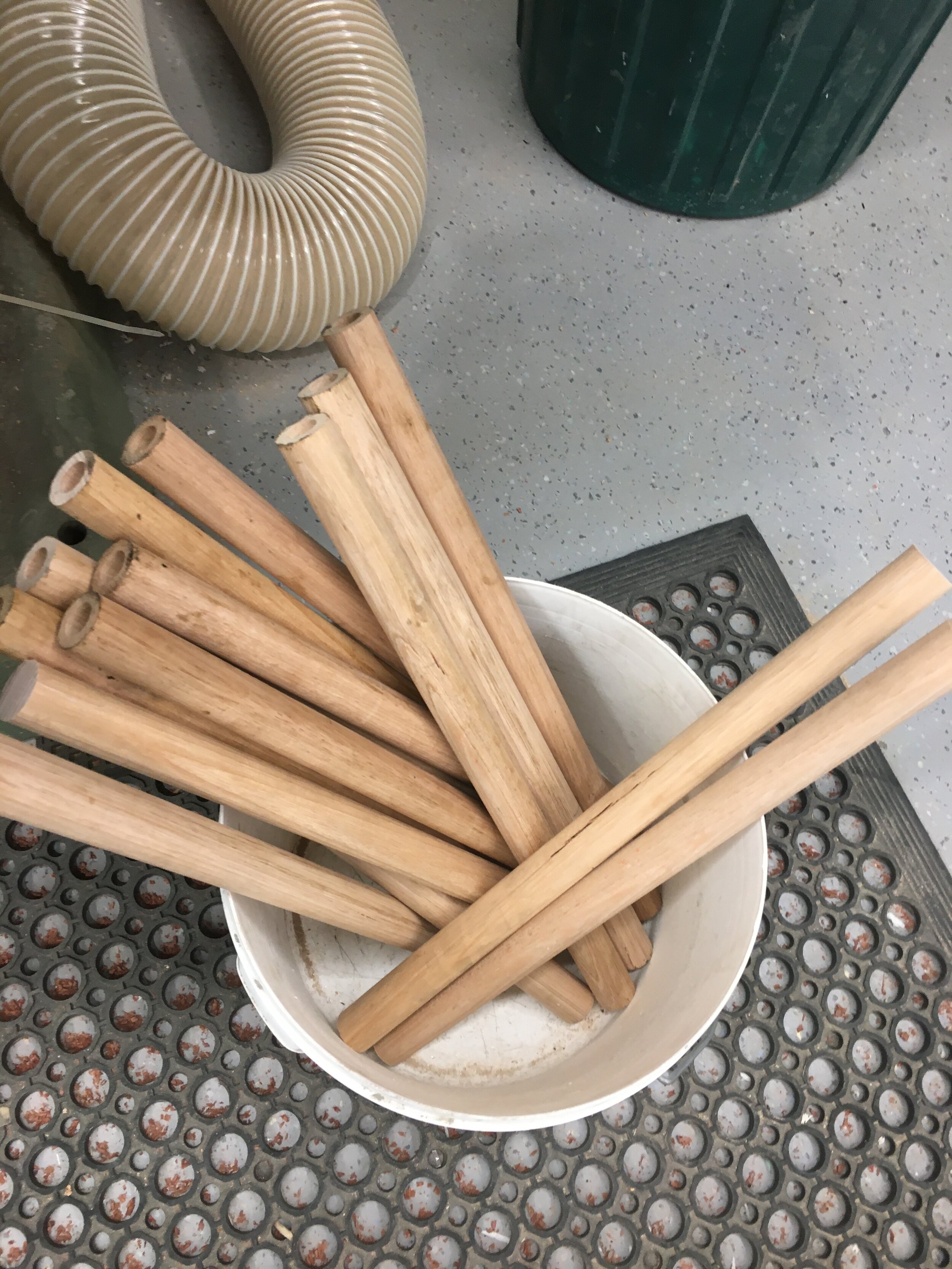Brief: Select a domestic waste stream and reconfigure and adapt it into a useful material for furniture production, then prototype an object from this list: (Dining Chair, Coat Rack, Floor Lamp, Servery Trolley, Stacking Box Set, Pot Plant Stand)
Supplementary material available in the form of 28mm and 16mm Tasmanian Oak Dowels.
2020
Timeframe: 9 Weeks
I chose to try and push myself during this project. In the luxury writing instrument space, there are few materials with the reputation of Casein. Casein, or more properly Galalith, is polymerised and insolubilized protein derived from milk curds. Historically it was produced using formaldehyde to set the protein into a hard structure, but I hoped there was an alternative way that didn’t involve the use of a horribly carcinogenic material. In the UK up to 1/6th of all milk goes to waste, so harvesting this milk waste seemed like a reasonable option for a highly sustainable material.






Initial Experimentation
Batch One involved the production of what is essentially cottage cheese by separating the curd from the whey with an acid, in this case Acetic acid through high strength vinegar. I filtered the curds out from the whey and spread them out on a tray to dry, hoping air drying would be enough to create a decent polymer structure. Instead I produced a fairly unpleasant smelling hard cheese. After further research I discovered that it was the residual fat and sugar in the milk that caused improper polymerisation and are vectors for degradation of the material. Skim milk was to be a better feedstock than full cream.




Second Batch:
In the second batch I started experimenting both with the use of Methylated Spirits to remove the sugars and fats, and with ink to dye the material. Both were very successful at achieving those goals. Separating the methylated spirits from the curd was to be the next hurdle. After the fat and sugar were removed the protein became extra sticky and stuck not only to the vessels and utensils used for processing it, but also to the seperatory media (a coffee filter). This second batch yielded only around 30 grams of barely usable plastic from 4 litres of milk




Third, Fourth and Fifth Batches
The third batch (pale blue) was a major improvement in the separation process. This was a decent yeild of material from ~4 litres of milk and cured properly into a hard and dense material. It still had a curd surface texture but held together well and cured all the way through the 10mm material thickness.
My fourth experiment (red) was a test to see if laminating the material into a composite structure would work. The cloth did reduce some of the brittleness but had issues with de-lamination, and while the curd stuck well to the fabric it didn’t bond well through it like an epoxy or polyester resin would.
I tested a few cutting, sanding, and drilling operations on both the composite and the solid casein samples and both were really easy to work with, even a hole saw into the composite material worked really well.
For my fifth experiment I made two batches, one in orange, one in brown, and mixed them for a terrazzo effect. This one I decided to bake rather than dehydrate which cured the material very quickly. Despite the use of ~24 litres of milk, this batch only produced around a 300mm* 300mm*6mm block which had issues with porosity and brittleness.
The Object: A Dining Chair
The scope of this brief involved the creation of a usable product, not just a material to build it out of. Unfortunately my material proved too difficult to produce on a large enough scale, at least within a domestic kitchen, to be of any use in the furniture industry. I knew I would have to try and use the material sparingly and in the right places, but even then that proved difficult and ultimately I was unable to integrate it into the design.




Chair Building
I decided to fall back on my joinery experience to build a shaker-style dining chair. I had wanted to use the casein polymer slab as a seat or backrest panel but my best panel ended up shattering. I continued building the chair to have something to show at the exhibition. To join dowel to dowel in an aesthetically pleasing way I settled on birdsmouth joints with a peg using the smaller size dowel.
I bored all the ends of the large dowels using a metal lathe, then cut the birdsmouths using a hole saw on a milling machine. Having not used a milling machine before I was very happy with the consistency of my parts, only scrapping 1 out of the 18 rails I bored.
I cross drilled the holes for the small dowels using a forstner bit also on the milling machine. This bit was incredibly blunt and did not produce good results, the holes were well placed and toleranced, but suffered from breakout. I wanted these holes to be blind holes rather than through holes but was not confident in hitting a depth dimension consistently.





Assembly and Reflections
The assembly was much easier than I expected. I would have thought the dimensions would have been out of tolerance and the dowels would not have fitted together. The stretcher/spreader rail assembly was the first part I put together, then the seat pan, and finally I attached the legs and back. Unfortunately I didn’t have time to glue each assembly properly before assembling the whole thing together, and also couldn’t find clamps big enough in Workshop 7. The chair survived testing but the joints were weak.
I am still a little disappointed I couldn’t produce enough casein plastic to use it properly in my design, or integrate it well into what I did end up producing. There is probably a good reason casein isn’t used for much in the way of furniture objects, between low yield and a difficult to scale waste stream. With an industrial laboratory I’m sure it’s possible to produce high purity material at scale and cure it properly.
As far as the finished chair I really would have liked to have given it a more sculpted seat and backrest, and additionally it is fairly resource intensive for just the one chair. Over 5 linear metres of 28mm dowel are used, and I think there’s a good reason most furniture makers stick to rectangular section material.
